American food🥫🥘😋🍲
Key lime pie :
If life gives you limes, don't make limeade, make a Key lime pie. The official state pie of Florida, this sassy tart has made herself a worldwide reputation, which started in -- where else? -- the Florida Keys, from whence come the tiny limes that gave the pie its name.
Aunt Sally, a cook for Florida's first self-made millionaire, ship salvager William Curry, gets the credit for making the first Key lime pie in the late 1800s. But you might also thank Florida sponge fisherman for likely originating the concoction of key lime juice, sweetened condensed milk, and egg yolks, which could be "cooked" (by a thickening chemical reaction of the ingredients) at sea.
Tater tots:
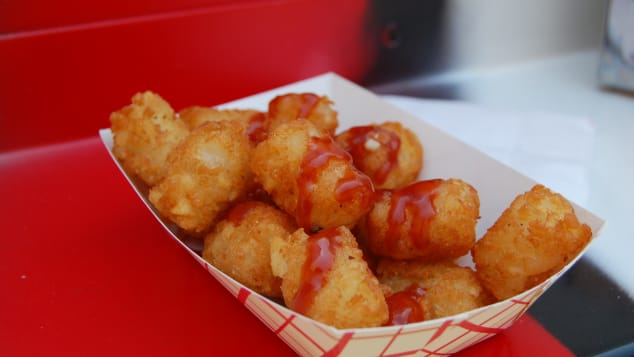
We love French fries, but for an American food variation on the potato theme, one beloved at Sonic drive-ins and school cafeterias everywhere, consider the Tater Tot.
Notice it often has the registered trademark -- these commercial hash brown cylinders are indeed proprietary to the Ore-Ida company. If you'd been one of the Grigg brothers who founded Ore-Ida, you'd have wanted to come up with something to do with leftover slivers of cut-up potatoes, too. They added some flour and seasoning and shaped the mash into tiny tots and put them on the market in 1956. A little more than 50 years later, America is eating about 32 million kilos of these taters annually.
San Francisco sourdough bread:
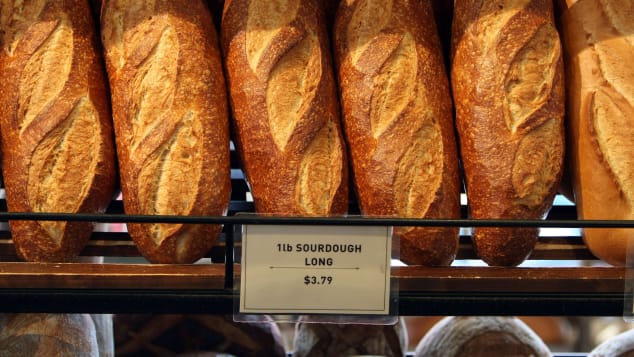
Sourdough is as old as the pyramids and not coincidentally was eaten in ancient Egypt. But the hands-down American favorite, and the sourest variety, comes from San Francisco.
As much a part of NoCal culinary culture as Napa Valley wine, sourdough bread has been a staple since Gold Rush days. Once upon a frontier time, miners (called "sourdoughs" for surviving on the stuff) and settlers carried sourdough starter (more reliable than other leavening) in pouches around their necks or on their belts.
Thank goodness that's not the way they do it at Boudin Bakery, which has been turning out the bread that bites back in the City by the Bay since 1849.
Cobb salad:

The chef's salad originated back East, but American food innovators working with lettuce out West weren't going to be outdone.
In 1937, Bob Cobb, the owner of The Brown Derby, was scrounging around at the restaurant's North Vine location for a meal for Sid Grauman of Grauman's Theater when he put together a salad with what he found in the fridge: a head of lettuce, an avocado, some romaine, watercress, tomatoes, some cold chicken breast, a hard-boiled egg, chives, cheese, and some old-fashioned French dressing.
Brown Derby lore says, "He started chopping. Added some crisp bacon, swiped from a busy chef." The salad went onto the menu and straight into the heart of Hollywood.
Pot roast:
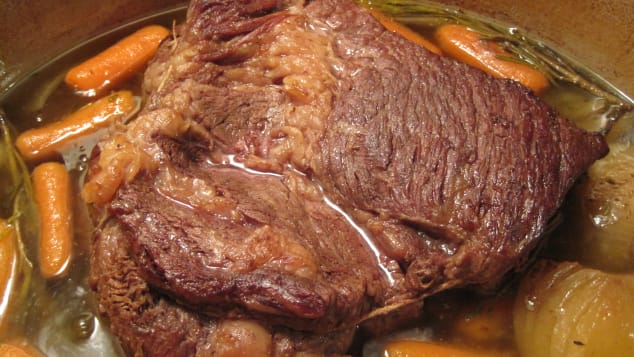
The childhood Sunday family dinner of baby boomers everywhere, pot roast claims a sentimental favorite place in the top 10 of American comfort foods. There's a whole generation that would be lost without it.
Beef brisket, bottom or top round, or chuck set in a deep roasting pan with potatoes, carrots, onions, and whatever else your mom threw in to be infused with the meat's simmering juices, the pot roast could be anointed with red wine or even beer, then covered and cooked on the stovetop or in the oven.
Twinkies:
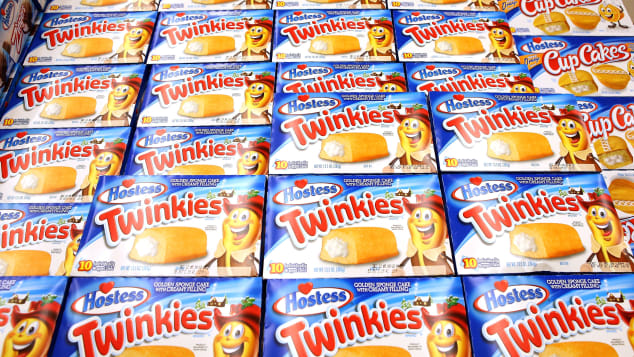
Hostess' iconic "Golden Sponge Cake with Creamy Filling" has been sugaring us up since James Dewar invented it at the Continental Baking Company in Schiller Park, Illinois, in 1930.
The Twinkie forsook its original banana cream filling for vanilla when bananas were scarce during World War II. As if they weren't ridiculously good enough already, the Texas State Fair started the fad of deep-frying them.
Dumped in hot oil or simply torn from their packaging, Twinkies endear with their name (inspired by a billboard advertising Twinkle Toe Shoes), their ladyfinger shape (pierced three times to inject the filling), and their evocations of lunchtime recess. They were temporarily taken off the shelves between November 2012 to July 2013 -- when Hostess filed for bankruptcy. Now they are back and going strong.
Jerky:
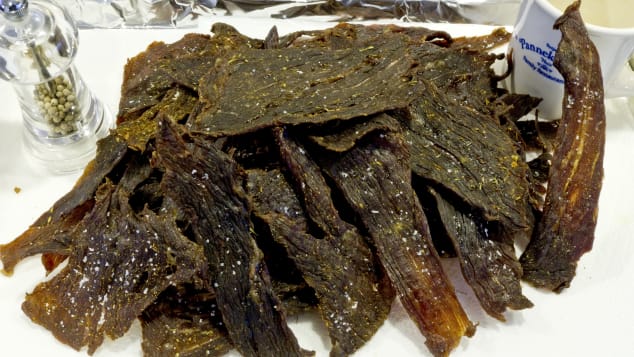
Dehydrated meat shriveled almost beyond recognition -- an unlikely source of so much gustatory pleasure, but jerky is a high-protein favorite of backpackers, road trippers, and snackers everywhere.
It's American food the way we like our wilderness grub -- tough and spicy.
We like the creation myth that says it's the direct descendant of American Indian pemmican, which mixed fire-cured meat with animal fat. Beef, turkey, chicken, venison, buffalo, even ostrich, alligator, yak, and emu. Peppered, barbecued, hickory-smoked, honey glazed. Flavored with teriyaki, jalapeno, lemon pepper, chili.
Jerky is so versatile and portable and packs such nutritional power that the Army is experimenting with jerky sticks that have the caffeine equivalent of a cup of coffee.
However you take your jerky -- caf or decaf; in strips, chips, or shreds -- prepare to chew long and hard. You've still got your own teeth, right?
Fajitas:
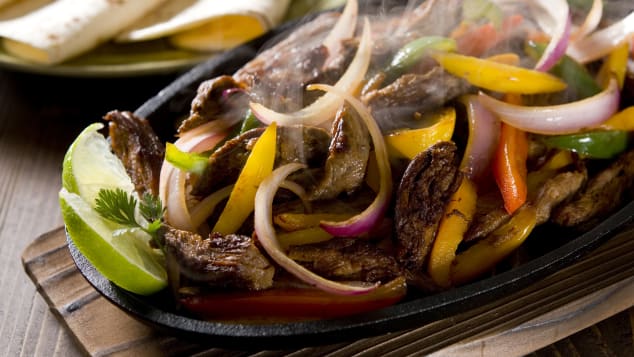
Take some vaqueros working on the range and the cattle slaughtered to feed them. Throw in the throwaway cuts of meat as part of the hands' take-home pay, and let cowboy ingenuity go to work.
Grill skirt steak (faja in Spanish) over the campfire, wrap in a tortilla, and you've got the beginning of a Rio Grande region tradition. The fajita is thought to have come off the range and into popular culture when a certain Sonny Falcon began operating fajita taco stands at outdoor events and rodeos in Texas beginning in 1969.
It wasn't long before the dish was making its way onto menus in the Lone Star State and spreading with its beloved array of condiments -- grilled onions and green pepper, pico de gallo, shredded cheese, and sour cream -- across the country. Don't forget the Altoids.
Banana split:
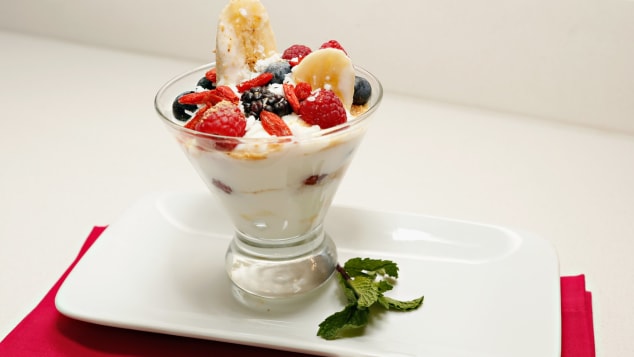
Like the banana makes it good for you. Still, kudos to whoever invented the variation of the sundae known as the banana split. There's the 1904 Latrobe, Pennsylvania, story, in which future optometrist David Strickler was experimenting with sundaes at a pharmacy soda fountain, split a banana lengthwise, and put it in a long boat dish.
And the 1907 Wilmington, Ohio, story, wherein restaurant owner Ernest Hazard came up with it to draw students from a nearby college. Fame spread after a Walgreens in Chicago made the split its signature dessert in the 1920s. Whatever the history, you'll find plenty food for thought at the annual Banana Split Festival, which takes place on the second weekend in June in Wilmington.
Cornbread:
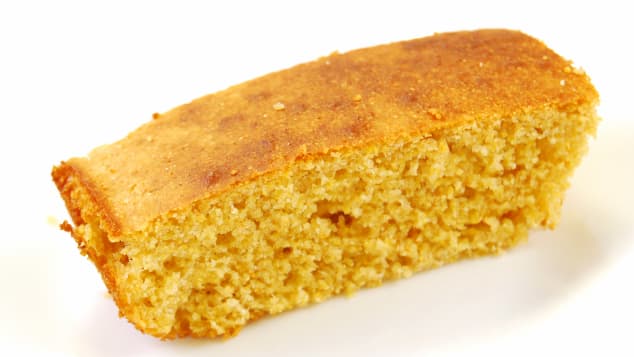
It's one of the pillars of Southern cooking, but cornbread is the soul food of many a culture -- black, white, and Native American -- and not just south of the Mason-Dixon. Grind corn coarsely and you've got grits; soak kernels in alkali, and you've got hominy (which we encourage you to cook up into posole). Leaven finely ground cornmeal with baking powder, and you've got cornbread.
Southern hushpuppies and corn pone, New England johnnycakes; cooked in a skillet or in muffin tins; flavored with cheese, herbs, or jalapenos -- cornbread in any incarnation remains the quick and easy go-to bread that historically made it a favorite of Native American and pioneer mothers and keeps it on tables across the country today.
GORP:
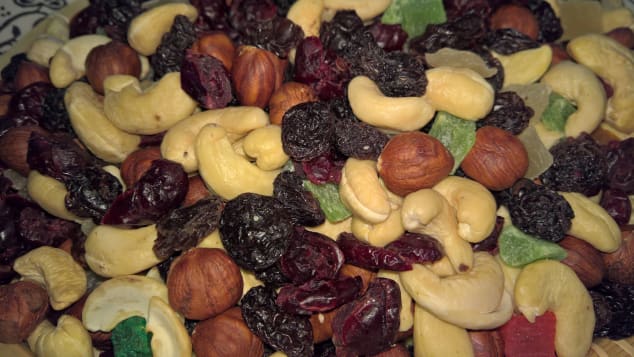
"Good Old Raisins and Peanuts," GORP is the energy salvation of backpackers everywhere.
Centuries before trail mix came by the bag and the bin, it was eaten in Europe, where hiking is practically a national pastime.
The thing to remember here is that the stuff is American food rocket fuel. Add all the granola, seeds, nuts, dried fruit, candied ginger, and M&Ms you want. Just be sure to store in a bear-proof canister because suspending from a branch in a nylon sack isn't going to do it.
Jambalaya:
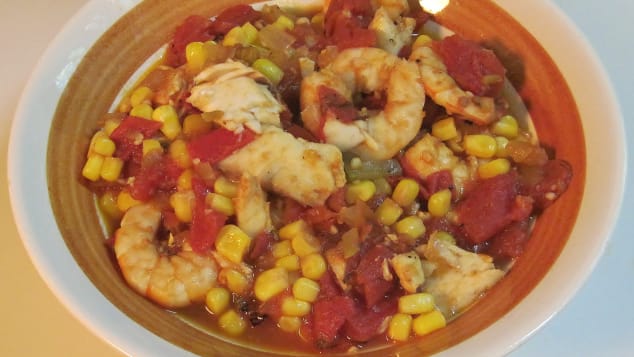
Jambalaya, crawfish pie, file gumbo ... what dish could be so evocative that it inspired Hank Williams to write a party song for it in 1952 and dozens more to cover it (including everyone from Jo Stafford to Credence Clearwater Revival to Emmylou Harris)?
The sweep-up-the-kitchen cousin of Spanish paella, jambalaya comes in red (Creole, with tomatoes) and brown (Cajun, without). Made with meat, vegetables (a trinity of celery, peppers, and onions), and rice, Louisiana's signature dish might be most memorable when made with shrimp and andouille sausage.
Whatever the color and secret ingredients, you can be sure of one thing when you sit down with friends to a big bowlful: son of a gun, gonna have big fun on the bayou.
Biscuits 'n' gravy:
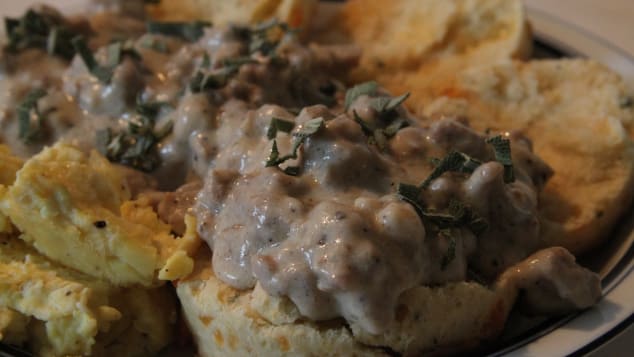
An irresistible Southern favorite, biscuits and gravy would be a cliche if they weren't so darned delicious.
The biscuits are traditionally made with butter or lard and buttermilk; the milk (or "sawmill" or country) gravy with meat drippings and (usually) chunks of good fresh pork sausage and black pepper. Cheap and requiring only widely available ingredients, a meal of biscuits and gravy was a filling way for slaves and sharecroppers to face a hard day in the fields.
"The Southern way with gravies was born of privation. When folks are poor, they make do. Which means folks make gravy," says The Southern Foodways Alliance Community Cookbook. The soul, you might say, of soul food.
Smithfield ham:
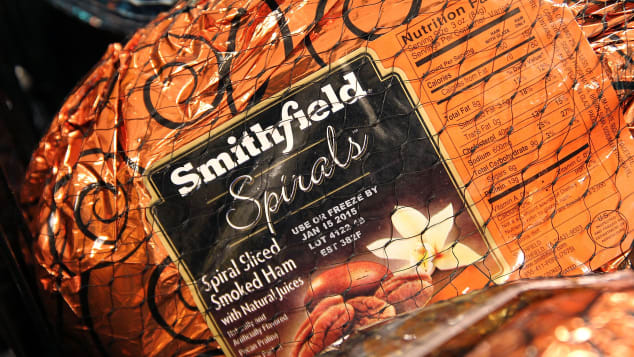
"Ham, history, and hospitality." That's the motto of Smithfield, Virginia, the Smithfield of Smithfield Virginia ham. Notice "ham" comes before history, which really says something considering this hamlet of 8,100 was first colonized in 1634.
Epicenter of curing and production of a head-spinning number of hogs, Smithfield comes by the title Ham Capital of the World honestly: lots of ham is called Virginia, but there's only one Smithfield, as defined by a 1926 law that says it must be processed within the city limits.
The original country-style American ham was dry cured for preservation; salty and hard, it could keep until soaked in water (to remove the salt and reconstitute) before cooking. The deliciously authentic cured Virginia country ham happens to have been the favorite of that famous Virginian, Thomas Jefferson.
Chicken fried steak:
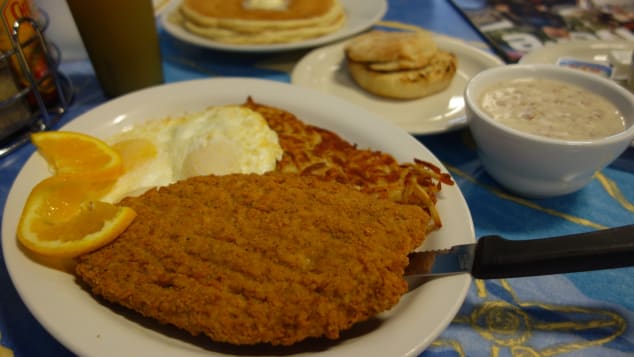
A guilty pleasure if there ever was one, chicken fried steak was born to go with American food classics like mashed potatoes and black-eyed peas.
A slab of tenderized steak breaded in seasoned flour and pan fried, it's kin to the Weiner Schnitzel brought to Texas by Austrian and German immigrants, who adapted their veal recipe to use the bountiful beef found in Texas.
Lamesa, on the cattle-ranching South Texas plains, claims to be the birthplace of the dish, but John "White Gravy" Neutzling of Lone Star State cowboy town of Bandera insisted he invented it. Do you care, or do you just want to ladle on that peppery white gravy and dig in?
Wild Alaska salmon:
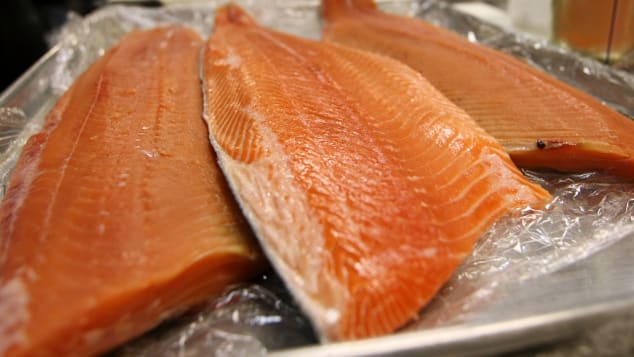
Guys risk life and limb fishing for this delish superfood.
Unlike Atlantic salmon, which is 99.8% farmed, Alaska salmon is wild, which means the fish live free and eat clean -- all the better to glaze with Dijon mustard or real maple syrup. Alaska salmon season coincides with their return to spawning streams (guided by an amazing sense of smell to the exact spot where they were born).
Worry not: before fishing season, state biologists ensure that plenty of salmon have already passed upstream to lay eggs. But let's get to that cedar plank, the preferred method of cooking for the many Pacific Northwest Indian tribes whose mythologies and diets include salmon.
Use red cedar (it has no preservatives), and cook slow, for that rich, smoky flavor. Barring that, there's always lox and bagels.
California roll:
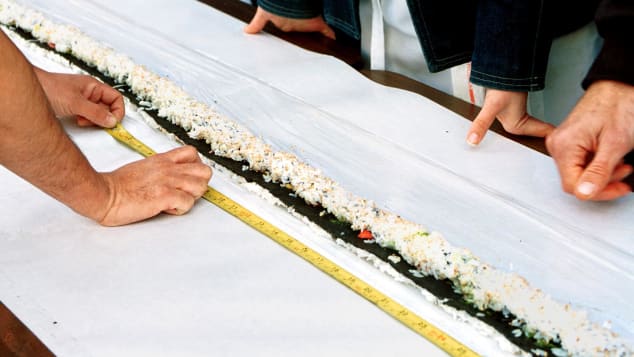
So much more than the gateway sushi, the California roll isn't just for wimps who can't go it raw -- although that's essentially the way it got its start in Los Angeles, where sushi chefs from Japan were trying to gain a beachhead in the late 1960s/early 1970s.
Most credit chef Manashita Ichiro and his assistant Mashita Ichiro, at L.A.'s Tokyo Kaikan restaurant, which had one of the country's first sushi bars, with creating the "inside out" roll that preempted Americans' aversions by putting the nori (seaweed) on the inside of the rice and substituting avocado for toro (raw fatty tuna).
The avocado-crab-cucumber roll became a hit, and from that SoCal beachhead, sushi conquered the country. After leading the charge for the sushi invasion of the 1980s, the California roll now occupies grocery stores everywhere. Wasabi anyone?
Grits:
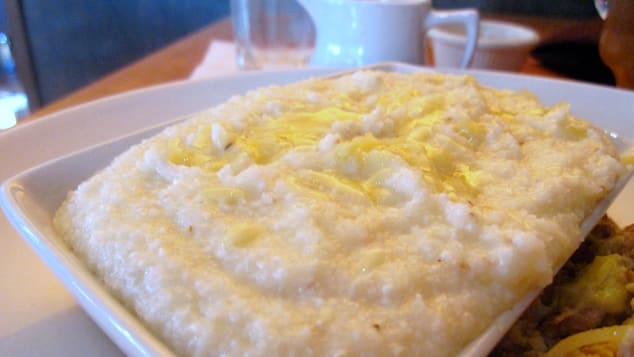
People who didn't grow up eating them wonder what the heck they are. People who did grow up eating them (and that would be just about everyone in the South) wonder how anyone could live without them.
Grits, beloved and misunderstood -- and American down to their Native roots. They're the favored hot breakfast in the so-called Grits Belt, which girdles everything from Virginia to Texas and where the dish is a standard offering on diner menus.
Grits are nothing if not versatile: They can go plain, savory, or sweet; pan-fried or porridge-like. Simple and cheap, grits are also profoundly satisfying.
Which might be why Charleston's The Post and Courier opined in 1952 that "Given enough [grits], the inhabitants of planet Earth would have nothing to fight about. A man full of [grits] is a man of peace." Now don't that just butter your grits?
Macaroni and cheese:
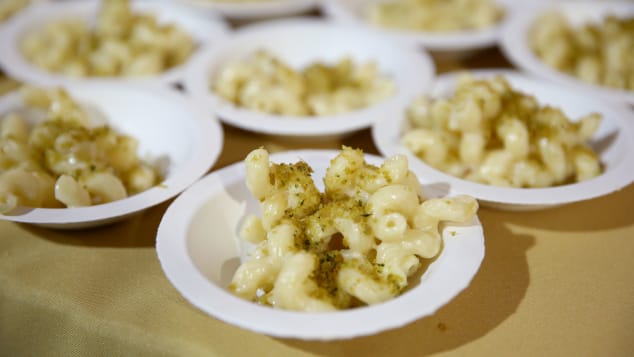
The ultimate comfort food, macaroni and cheese is also the salvation of many a mom placating a finicky toddler.
Nothing particularly American about pasta and cheese -- except for the fact that on a European trip, Thomas Jefferson liked a certain noodle dish so much he took notes and had it served back home at a state dinner as "macaroni pie."
Jefferson's cousin Mary Randolph included a recipe for "macaroni and cheese" in her 1824 cookbook "The Virginia Housewife."
So whether you're eating a gourmet version by one of the countless chefs who've put their own spin on it, or just digging like a desperado in the pantry for that box of Kraft, give mac and cheese its patriotic props.
Maryland crabcakes:
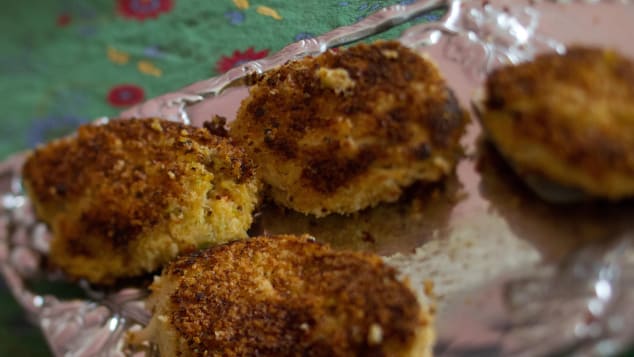
The Chesapeake Bay yields more than just the regatta-loving suntanned class in their sock-free topsiders.
It's the home habitat of the blue crab, which both Maryland and Virginia claim as their own.
Boardwalk style (mixed with fillers and served on a bun) or restaurant/gourmet style; fried, broiled, or baked, crab cakes can be made with any kind of crab, but the blue crabs of Chesapeake Bay are preferred for both tradition and taste.
When Baltimore magazine rounded up the best places to get the city's signature food, editors declared simplicity the key, while lamenting the fact that most crabmeat doesn't even come from home turf these days. Kind of makes you crabby, doesn't it?
Potato chips:
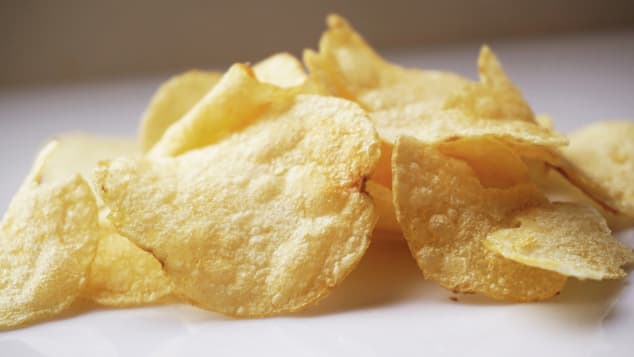
We have a high-maintenance resort guest to thank for America's hands-down favorite snack.
Saratoga Springs, New York, 1853: Native American chef George Crum is in the kitchen at the elegant Moon Lake Lodge. A persnickety customer sends back his French fries (then highfalutin fare eaten with a fork) for being too thick. Crum makes a second, thinner, order.
Still too thick for the picky diner. Annoyed, Crum makes the next batch with a little attitude, slicing the potatoes so thin, the crispy things can't possibly be picked up with a fork. Surprise: the wafer-thin fried potatoes are a hit.
Traveling salesman Herman Lay sold them out of the trunk of his car before founding Lay's Potato Chips, the first nationally marketed brand. Lay's would ultimately merge in 1961 with Frito to create the snack behemoth Frito-Lay.
Cioppino:
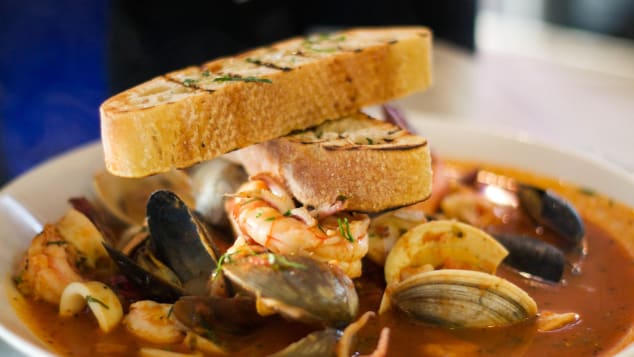
San Francisco's answer to French bouillabaisse, cioppino (cho-pea-no) is fish stew with an Italian flair.
It's an American food that's been around since the late 1800s, when Portuguese and Italian fishermen who settled the North Beach section of the city brought their on-board catch-of-the-day stew back to land and area restaurants picked up on it.
Cooked in a tomato base with wine and spices and chopped fish (whatever was plentiful, but almost always crab), cioppino probably takes its name from the classic fish stew of Italy's Liguria region, where many Gold Rush era fishermen came from.
Get a memorable bowl at Sotto Mare in North Beach, Scoma's on Fisherman's Wharf, and Anchor Oyster Bar in the Castro District. Don't feel bad about going with the "lazy man's" cioppino -- it only means you're not going to spend half the meal cracking shellfish.
Fortune cookies:

Culinary snobs like to look down their holier-than-thou chopsticks at ABC (American-born Chinese) food, but we're not afraid to stand up for the honor of such North American favorites as General Tso's chicken, Mongolian beef, broccoli beef, lemon chicken, deep-fried spring rolls and that nuclear orange sauce that covers sweet-and-sour anything.
As the seminal symbol of all great American-born Chinese grub, however, we salute the mighty fortune cookie. Almost certainly invented in California in the early 1900s (origin stories vary between San Francisco, Los Angeles and even Japan), the buttery sweet crescents are now found in Chinese joints around the world ... with the notable exception of China.
That's OK -- the crunchy biscuits are still our favorite way to close out any Chinese meal.
Peanut butter sandwich:
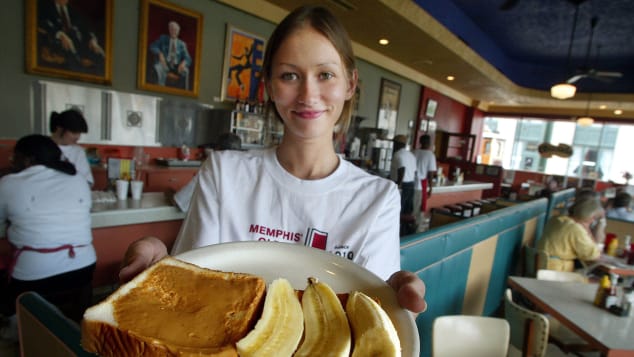
Creamy or chunky? To each his own, but everybody -- except those afflicted with the dreaded and dangerous peanut allergy and the moms who worry sick about them -- loves a good peanut butter sandwich.
First served to clients at Dr. John Harvey Kellogg's sanatorium in Battle Creek, Michigan, peanut paste was improved upon when chemist Joseph Rosefield added hydrogenated vegetable oil and called his spread Skippy.
That was 1922; not quite 100 years later, peanut butter is an American mainstay, often paired with jelly for that lunchbox workhorse the PB&J. For a rocking alternative, try peanut butter sandwiches the way Elvis Presley liked them: with ripe mashed bananas, grilled in butter.
Baked beans:
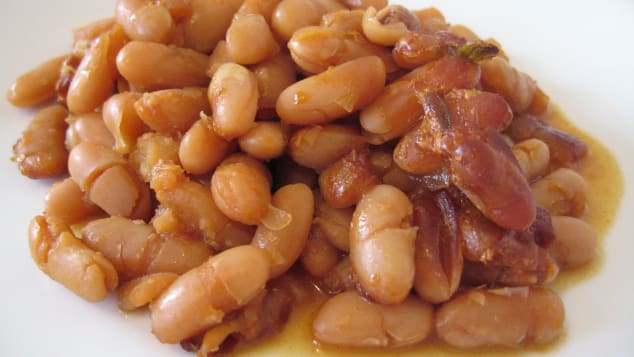
It's not a cookout, potluck, or the end of a long day in the saddle without a bubbling pot full of them. Just ask the Pioneer Woman, who waxes rhapsodic about the baked-bean recipe on her site (not a version with little weenies, but how fun are they?).
Yummy and plenty historical. Long before Bostonians were baking their navy beans for hours in molasses -- and earning the nickname Beantown in the process -- New England Native Americans were mixing beans with maple syrup and bear fat and putting them in a hole in the ground for slow cooking.
Favored on the frontier for being cheap and portable, chuck wagon, or cowboy, beans will forever live hilariously in popular culture as the catalyst behind the "Blazing Saddles" campfire scene, which you can review in unabashed immaturity on YouTube.
Popcorn:
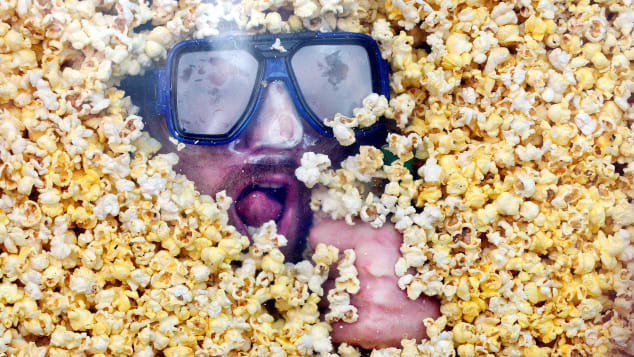
As the imperative on the Orville Redenbacher site urges: "All hail the super snack." The bow-tied entrepreneur pitched his popcorn tent in Valparaiso, Indiana, which celebrates its heritage at the Valparaiso Popcorn Festival the first Saturday after Labor Day.
It's just one of several Midwestern corn belt towns that vie for the title of Popcorn Capital of the World, but centuries before Orville's obsession aromatically inflated in microwaves or Jiffy Pop magically expanded on stovetops, Native Americans in New Mexico discovered corn could be popped — way back in 3600 B.C.
Americans currently consume about 14 billion liters of popcorn a year; that's 43 liters per man, woman, and child.
Fried chicken and waffles :
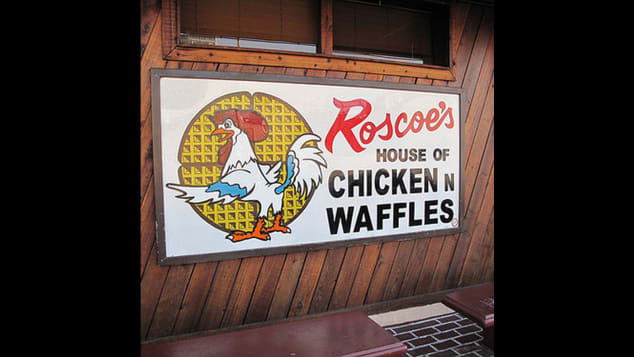
Scottish immigrants brought the deep-fry method across the pond, and it was good old Colonel Saunders who really locked in on the commercial potential in 1930 when he started pressure-frying chicken breaded in his secret spices at his service station in Corbin, Kentucky, paving the way for Kentucky Fried and all the other fried chickens to come.
Nuggets, fingers, popcorn, bites, patties -- one of our all-time favorite ways to eat fried chicken is with waffles. And one of our favorite places to eat it is at Roscoe's Chicken and Waffles.
Immortalized in "Pulp Fiction" and "Swingers," the L.A. institution got the soul-food seal of approval when Obama himself related to Jay Leno on "The Tonight Show" that he'd popped in for some wings and waffles and downed them in the presidential limo.
New England clam chowder:
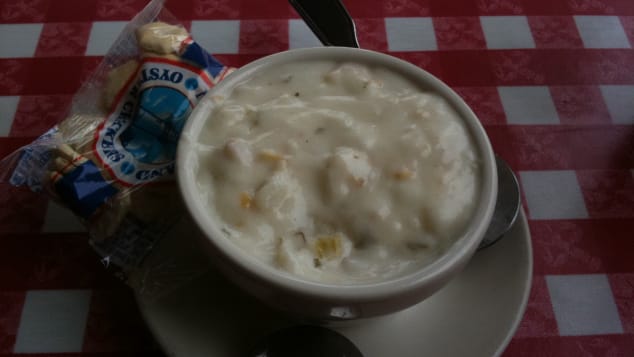
Gone are the days when Catholics religiously abstained from eating meat on Fridays, but you'll still find clam chowder traditionally served in some East Coast locales -- not that it reminds anyone of penance these days.
There are time-honored versions of chowder from Maine to Florida, but the most famous and favorite has to be New England style: creamy white with potatoes and onions.
There's Manhattan: clear with tomatoes. And there's even Minorcan (from around St. Augustine, Florida): spicy with hot datil pepper. The variations on East Coast clam chowder are deliciously numerous.
Even the West Coast has a version (with salmon instead of pork). With your fistful of oyster crackers ready to dump in, you might stop to wonder: What were the Pilgrims thinking when they fed clams to their hogs?



